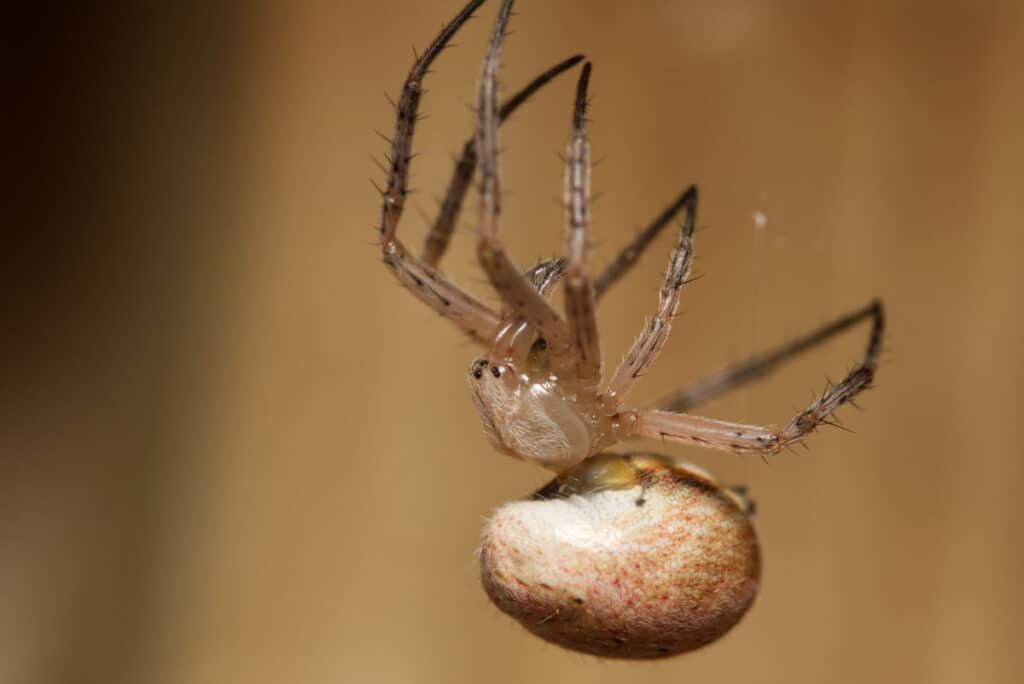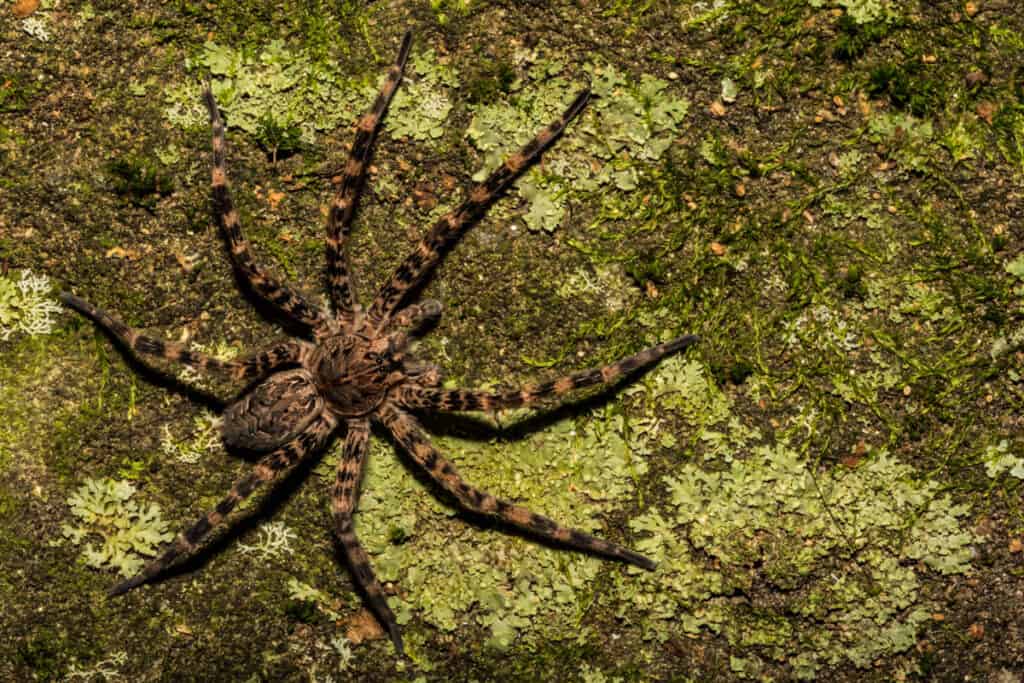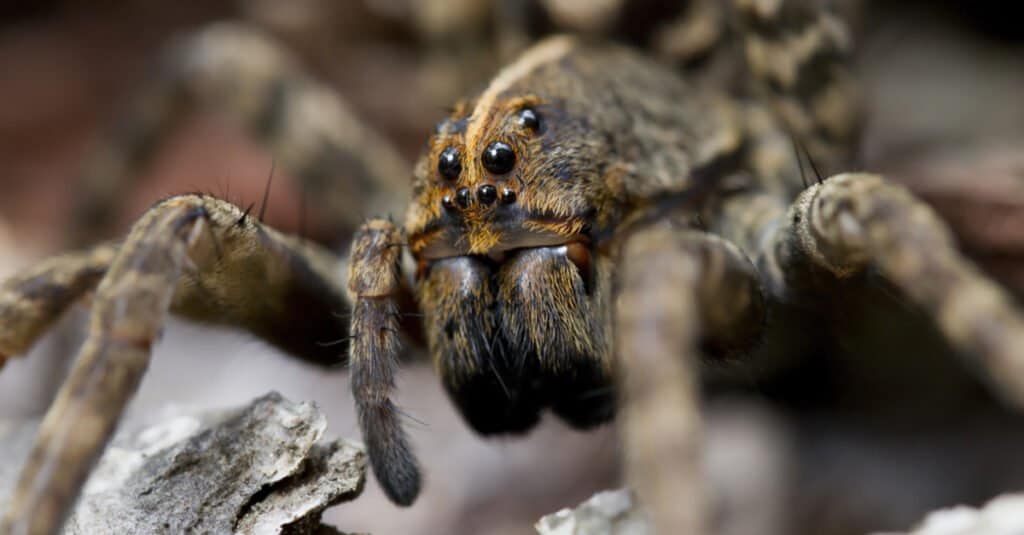Arkansas has a variety of spiders that live in the state. Some of them are small enough to fit comfortably on the tip of your finger, while others may be large enough to cover your entire hand. If you want to know about the biggest spiders, then you are in luck, as this article will look at the five biggest spiders in Arkansas.
There are more than 45,000 spiders that live in the world. There is never a shortage of spiders in the world, and in the months from spring to fall, you are sure to find an abundance near you.

What Are the Biggest Spiders in Arkansas?
A spider’s size varies depending on its species and sex. Female spiders tend to be larger than males and have more robust bodies. However, in some species, males may have longer legs.
Spiders can be measured by the size of their body and their leg span. Here are the five biggest spiders in Arkansas that you should look out for.
5. Black and Yellow Garden Spider (Argiope aurantia)

The black and yellow garden spider creates a web with a diameter of around two feet.
©iStock.com/AwakenedEye
The black and yellow garden spider is the largest orb-weaver species in Arkansas. Orb-weavers like this species are known for the orb-shaped webs that females build. Black and yellow garden spiders live in highly vegetated areas like gardens, woodlands, grasslands, and parks. They create webs up to two feet in diameter, which sometimes has a zig-zag pattern running down the middle called a stabilimentum.
Female black and yellow garden spiders are the only ones that create these webs and can be seen sitting in the center of their webs during the day. They are active and seen often during the months of summer and fall. Female black and yellow garden spiders have a black and yellow coloring, with a body size ranging from ¾ to 1 inch large. Male black and yellow garden spiders are much smaller and grow to about ¼ inch in size.
4. Southern House Spider (Kukulcania hibernalis)

Southern house spiders often get mistaken for brown recluses due to their similar markings.
©Kala Stuwe/Shutterstock.com
The southern house spider is common across the southern United States. This species lives in man-made structures like barns, garages, and inside homes. Females of this species are bigger than males and live in messy webs they create with a silk retreat. The webs of the southern house spider are built in crevices and corners, with a secluded place to hide.
Females of this species range from 0.47 to 0.7 inches in body size, and they have a leg span of around 2 inches. Male southern house spiders range from 0.31 to 0.47 inches in body size, and they have more slender legs. This spider has brown coloring and is often confused for the brown recluse. These spiders are bigger than the brown recluse and do not have the violin marking on their cephalothorax.
3. Dark Fishing Spider (Dolomedes tenebrosus)

The dark fishing spider can run across the surface of water or dive into the water to catch prey.
©iStock.com/JasonOndreicka
The dark fishing spider is one of the largest fishing spiders found in Arkansas. This spider is often found in woodlands, and wetland habitats. This species lives near freshwater sources like ponds or lakes, but it is not uncommon for them to venture away from water into more forestry areas.
Dark fishing spiders grow to about 0.5 to 1 inch in body size and have a leg space that gets close to 3 inches. Females of this species are larger and have more robust bodies. This spider may often be confused for wolf spiders, but it has a sleek appearance.
Active at night, this species spends most of its night hunting for insects. What makes fishing spiders unique is their ability to walk across the surface of the water. They are covered in hydrophobic hairs, and their legs do not break the tension of water, allowing them to walk on it. Dark fishing spiders dive for fish or use the water to escape predators like frogs or larger spiders.
2. Carolina Wolf Spider (Hogna carolinensis)

The Carolina
wolf spider
is the biggest spider of all Lycosidae species.
©Will E. Davis/Shutterstock.com
The Carolina wolf spider is the largest species of Lycosidae, out of the 2,300 different species of wolf spider currently discovered. This spider’s body size ranges from 0.7 to 1.5 inches large and has a leg span capable of growing close to 4 inches. Carolina wolf spiders’ coloring ranges from brown to nearly black. They have dark markings on them, but their size is when they easily identify them from others.
Carolina wolf spiders live in forests, urban areas, and habitats with lots of natural debris. They are active at night, and during the day, these spiders live in a burrow, or hide under things like leaf litter. Spiders, frogs, lizards, and other small animals are what they eat. Wolf spiders are extremely quick and get their name from their wolf-like hunting abilities.
1. Texas Brown Tarantula (Aphonopelma hentzi)

Texas brown tarantulas are the largest spiders in Arkansas.
©texas brown tarantula/Shutterstock.com
The Texas brown tarantula lives in Arkansas and is also known as the Arkansas chocolate tarantula. This species is believed to be the only tarantula in the state and is also the largest spider in Arkansas. Texas brown tarantula has a body size of around 2 inches, with a leg span up that goes above 4 inches.
Grasslands, woodlands, and near mountainous regions are common habitats this spider lives. It prefers to stay in burrows, under rocks, logs, and abandoned animal dens. Along with being the biggest spider in Arkansas, it also has the longest lifespan. Females are able to live over 30 years, while males tend to not live past 12 years of age.
Texas brown tarantulas are not dangerous and rarely come in contact with humans. Similar to other species of tarantulas, they spend their lives in burrows. Males are often seen usually in the summer season, looking for a mate. They feed on animals like snakes, lizards, other spiders, and small rodents that wander too close to their burrow.
Are Larger Spiders More Dangerous?
Just because a spider is larger does not mean it is more dangerous than others. A spider’s danger to humans lies in its venom, and only the black widow and brown recluse in Arkansas have venom that is potentially dangerous to humans. A spider’s bite can also be dangerous if allergic, but this is rare.
Most spiders have a bite that is similar to that of a bee sting. Larger spiders may look more ferocious, but they are likely just as scared of humans as the smaller species. Larger spiders may pose more of a threat if bitten since their fangs may also be larger, so bites may be more painful. Knowing the dangerous spiders in your area is a good way to be safe around these eight-legged animals.
Summary of 5 Biggest Spiders in Arkansas
Here’s a recap of the five largest spider species found in the state of Arkansas.
| Rank | Spider | Maximum Body Size | Maximum Leg Span |
|---|---|---|---|
| 1 | Texas Brown Tarantula | 2 inches | 4 inches |
| 2 | Carolina Wolf Spider | 1.5 inches | 4 inches |
| 3 | Dark Fishing Spider | 1 inch | 3 inches |
| 4 | Southern House Spider | 1 inch | 2 inches |
| 5 | Black and Yellow Garden Spider | 1 inch | 2 inches |
The photo featured at the top of this post is © Cornel Constantin/Shutterstock.com
Thank you for reading! Have some feedback for us? Contact the AZ Animals editorial team.






